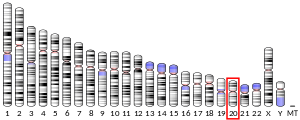
Mitochondrial antiviral-signaling protein

2MS7, 2MS8, 3J6C, 3J6J, 3RC5, 4P4H, 4Z8M, 5JEK57506228607ENSG00000088888ENSMUSG00000037523Q7Z434Q8VCF0NM_001206491NM_020746NM_001206382NM_001206383NM_001206385NM_144888NP_001193420NP_065797NP_001193311NP_001193312NP_001193314NP_659137Mitochondrial antiviral-signaling protein (MAVS) is a protein that in humans is encoded by the MAVS gene. The protein is also known by the names VISA (virus-induced signaling adapter), IPS-1 and Cardif. Aggregated MAVS forms protease resistant prion-like aggregates that activate IRF3 dimerization. Mitochondrial antiviral-signaling protein (MAVS) is a protein that in humans is encoded by the MAVS gene. The protein is also known by the names VISA (virus-induced signaling adapter), IPS-1 and Cardif. Aggregated MAVS forms protease resistant prion-like aggregates that activate IRF3 dimerization. Double-stranded RNA viruses are recognized in a cell type-dependent manner by the transmembrane receptor TLR3 or by the cytoplasmic RNA helicases MDA5 and RIG-I. These interactions initiate signalling pathways that differ in their initial steps but converge in the activation of the protein kinases IKKA (CHUK) and IKKB (IKBKB; MIM 603258), which activate NF-κB, or TBK1 and IKBKE, which activate IRF3. Activated IRF3 and NF-κB induce transcription of IFNβ (IFNB1). For the TLR3 pathway, the intermediary molecule before the pathways converge is the cytoplasmic protein TRIF (TICAM1). For RIG-I, the intermediary protein is mitochondria-bound MAVS. This article incorporates text from the United States National Library of Medicine, which is in the public domain.
